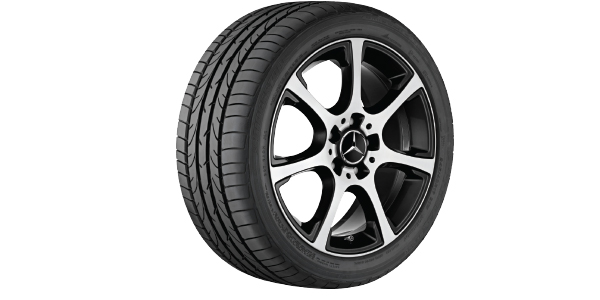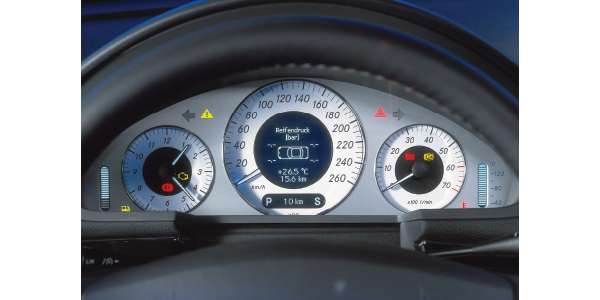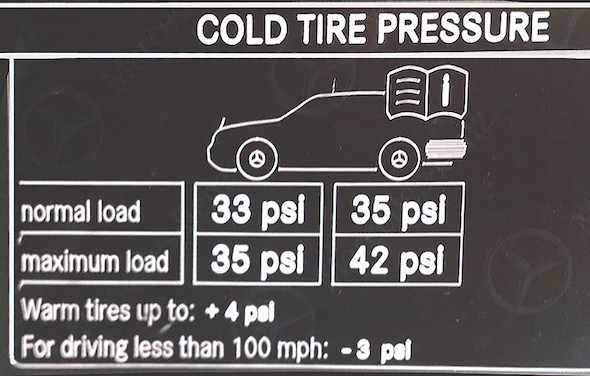Mercedes-Benz and other German vehicle manufacturers make the assumption that people here in the U.S. adjust their tire pressure for the number of people in the vehicle and for the speed at which they intend to drive. They do have the U.S. DOT-mandated tire pressure placard on the driver’s-side door jamb, but a “Luftdruck” sticker is also located behind the gas filler door, which provides the recommended tire pressure.
This sticker lets the driver set the correct tire pressure for the vehicle load and type of driving. If the driver intends to drive at 100 mph with four people in the vehicle, the sticker will advise him to add 4 psi in some cases. This ideation is also part of German tire pressure monitoring systems (TPMS) that require a reference pressure to set during a relearn.

On different Mercedes-Benz models, you will see two types of TPMS systems. Low-line systems do not display individual tire pressures. These systems just monitor inflation with one antenna and alert the driver if there is an underinflation or overinflation problem. Mid-line systems display the individual tire pressures, and some systems have four antennas mounted near the wheel wells.
Like all TPMS-equipped vehicles, the TPMS light continuously illuminates if one or more of the tires is significantly under- or overinflated. If the TPMS light flashes for 60 seconds and then stays illuminated, the TPMS system itself is not operating properly and further diagnostics should be performed. If a condition causing the TPMS to malfunction develops, it may take up to 10 minutes for the system to start flashing a TPMS light.
Relearn/Reset
With almost all Mercedes-Benz vehicles, you should use an auto relearn procedure that is activated by menus in the instrument cluster. Navigating to the menu will require different steps depending on the model.
When the vehicle is in the restart mode, it is listening for the sensors. During this time, it is looking for the four or five signals that occur on the test drive to determine if a signal is coming from one of the sensors on the vehicle. But, the tires need to first be set at the correct pressure. This is what Mercedes calls the “reference pressure.” If the inflation is not properly set, it could cause the tire pressure alert to come on.
When the restart mode is activated, the display should read, “Tire Pressure Monitor Active,” or “Adopt Current Pressures as New Guidance Values.” Press OK to accept the new values. Or, the display will then issue the message, “Use Current Pressures as New Reference Values.” Press OK, and it should show the message, “Tire Pressure Monitor Restarted.”
Drive the vehicle for at least 10 minutes as the system verifies that the current tire inflation pressures are within the specified range. During the drive, the current tire inflation pressures are accepted as reference values and inflation changes are based on this value.
Mid-line systems will typically require less time to restart or relearn a sensor’s position and start to display pressure values. Low-line systems may require at least 10 minutes of driving to complete the restart.
If a relearn process can’t be completed, use a TPMS tool to activate a sensor to make sure it is active and transmitting. If not, replace the sensor.















